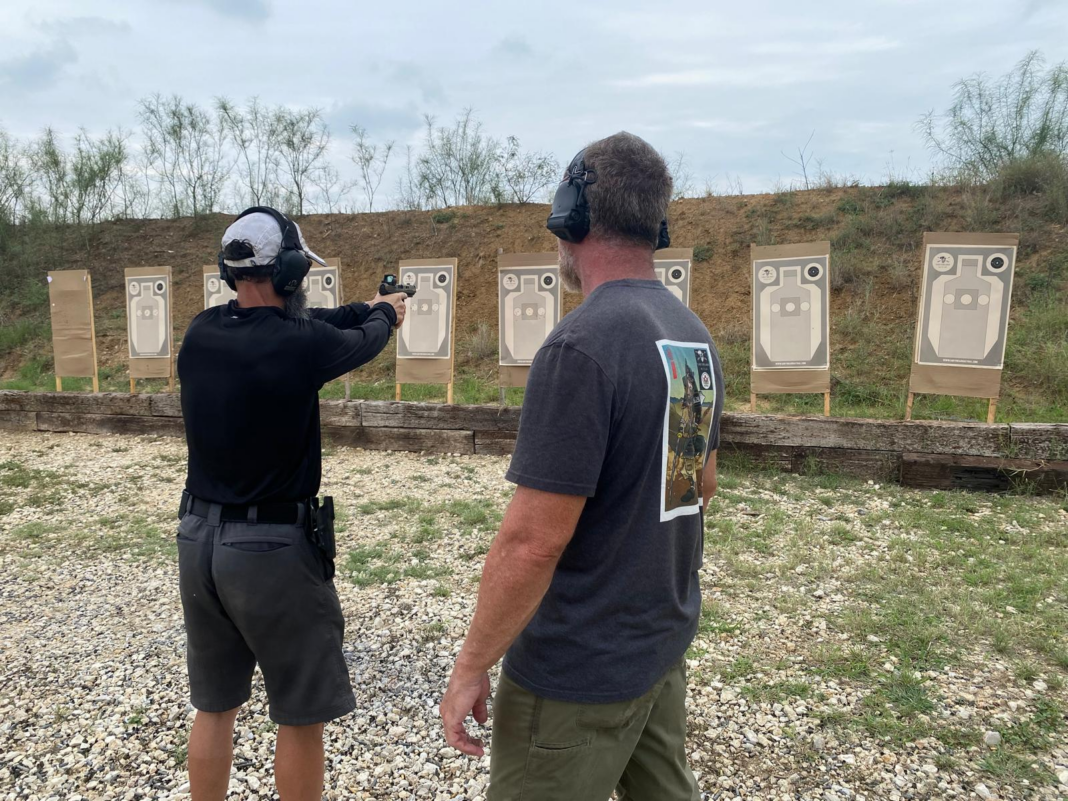Continued From Greybeard Actual Training Part 1
Greybeard Actual Training Day 1
As mentioned in Part 1, the first day of Greybeard Actual’s Pistol Skill Development kicked off with a lecture and discussion. One interesting tidbit I gleaned from that morning’s lecture is that musicians are apparently an over-represented demographic in the upper echelons of performance shooting. This is due to the fact that musicians are already accustomed to practicing as a virtue of the instruments they play.
We also discussed coaching cues and how different students respond to different things. It’s up to all of us to determine how we best learn and to lock into that for further skill-building.
Finally, the morning lecture also touched on the mental aspects of shooting, which struck a chord with me. Mental efficiency is as important as accuracy, especially in matches or any time performance is called for. That morning, I learned that the mental aspects of golf overlap with the shooting sports (I don’t play golf; nothing against it).
Pistol Skill Development doesn’t use NRA B-8 targets in its curriculum. This is because the coursework is built around drills and exercises that exclusively focus on trigger control, watching the sight(s), and transitioning between targets instead of slow-fire accuracy. Little didn’t denigrate B-8 shooting, and precision slow-fire pistol shooting has its place. However, it was beyond the scope of the class.
Instead, we students worked on various fundamental drills like Blake Drills and Bill Drills in addition to working off the different targeting zones of the Greybeard Actual paper targets. All of us students had plenty of chances to shoot several of the above-mentioned drills under Little’s supervision.
In my case, I’m happy to report that I even had a breakthrough moment in shooting transitions by the end of the first training day.
Training Day 2


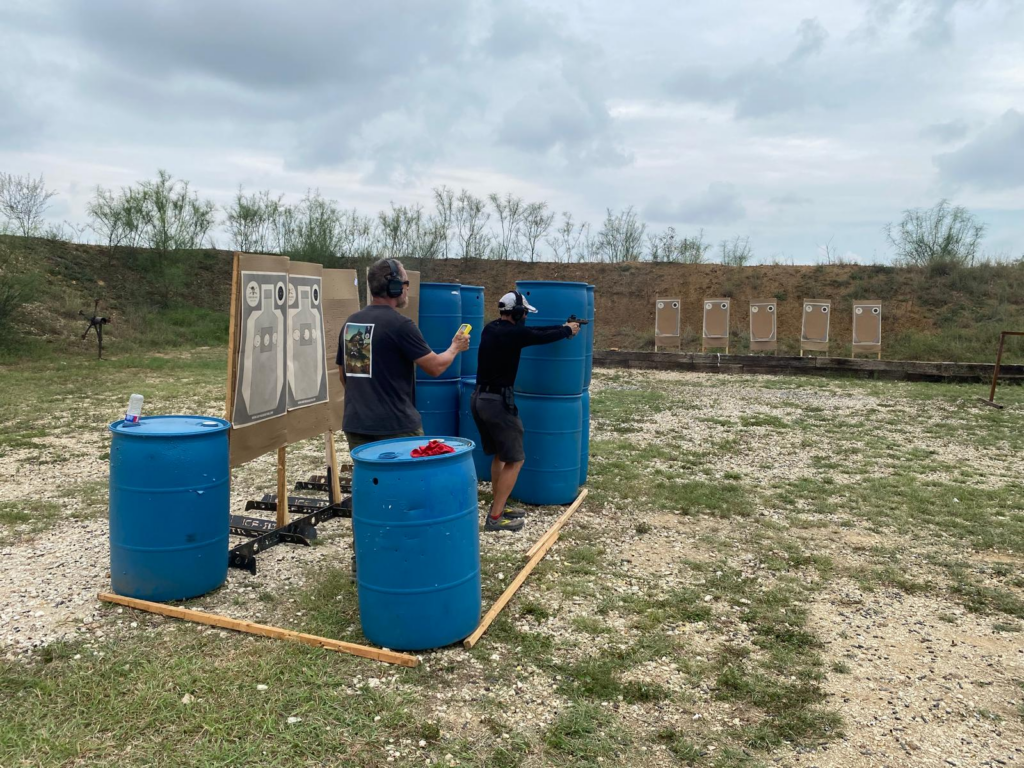
The second day of Pistol Skill Development was set up differently from the first. Instead of shooting drills from the line, the majority of Day 2 was spent shooting (at various steel targets) and moving around barricades or barrels. Even though we shot fewer rounds, Day 2 was still a busy and fast-paced day.
In addition to movement drills, we students got the chance to run through a mini USPSA-style stage as it was relevant to the lesson plan. Finally, we also shot the venerable El Presidente drill, one of the oldest stand-and-deliver tests of practical shooting skills in the books. Like the Bill Drill, Blake Drill, or any other dynamic endeavor, crushing El Presidente requires the shooter to be fully plugged in and in lockstep with their mind.

Calvinball
One of the activities we incorporated on Day 2 was Calvinball. Calvinball isn’t a drill per se but a system that Little devised with his pistol training partners. In it, a mini-stage or faux shooting stage is made up on the spot and meant to keep shooters on their toes. Not only literally since the race against the clock is on, but figuratively as well because the pressure ends up putting a huge cognitive load on the shooter.
Calvinball “stages” can be viewed as resistance training and are meant to last several rounds to really wring out the shooter’s mental acuity by virtue of repetition.
Greybeard’s 3.45 Drill
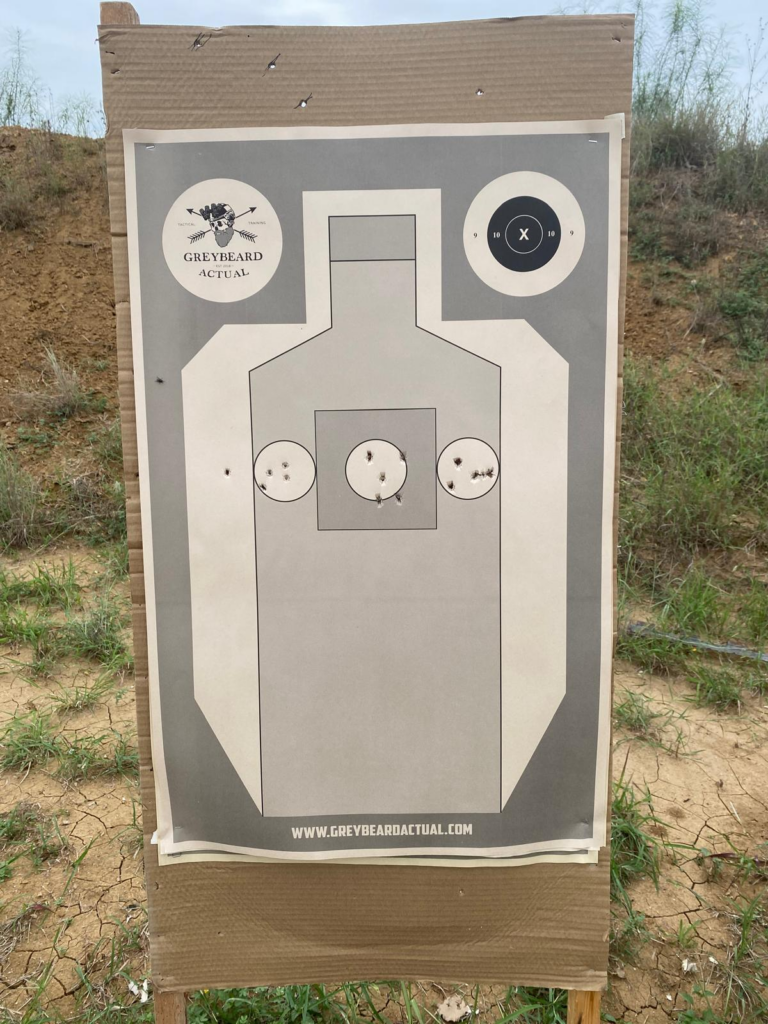
On both days of Greybeard Actual’s Pistol Skill Development, Little gave us the chance to try his personal set of standards, the Greybeard Actual 3.45 Drill. Like with many other practical shooting tasks, cleaning the 3.45 Drill isn’t easy, and doing so requires utmost concentration and automaticity with one’s handgun.
This exercise is carried out at 5 yards and involves four different strings of fire, all with a 3.45-second par-time. Besides this fixed par time, all shots must land inside the three-inch circles, and any misses void a clean score.
Those shooting from concealment or Level 3 duty gear are given some clemency with a ¼ second handicap. Shooting the 3.45 requires the use of both hands, either hand, transitions, and efficient reloads.
In addition to the 3.45 Drill, Little kept score on students’ other runs, such as their stage points during the mini-USPSA mockup, Bill Drill times, Blake Drill times, etc. All scores were aggregated at the end of class and scored like a USPSA match for points.
So, while the class definitely fostered an open and welcoming environment, students had the chance to experience the undercurrent and pressures of competition with their scoring. Once again, Pistol Skill Development isn’t a competition class, but competition shooting has definitely influenced the curriculum.
Concisely speaking, good pistol shooting boils down to the most accurate hits on target in the least amount of time; this is independent of tactics.
Pistol Skill Development: My Guns
By this point, I’ve reviewed and written about several variants of the 9mm Smith & Wesson M&P 2.0 family of striker-fired pistols. Since August, I’ve been shooting the full-size Smith & Wesson M&P 2.0 Metal Carry Comp. I like the M&P 2.0 series for many of the same reasons I like the Walther PDP series. They’re ergonomic, point well, and shoot well too.
I used Pistol Skill Development to put that Metal Carry Comp through its paces on Day 1. Until then, I hadn’t run any M&P 2.0 hard (as in quickly shooting several hundred rounds in a day, making the gun get hot and dirty). I exclusively shot Blazer 115-grain aluminum case ammo, and the pistol had no issues cycling approximately 653 rounds by the end of the first day.
I’ve kept an eye on YouTube and social media, and I’m aware that some M&P 2.0 Metal Carry Comp Models have had some reliability issues. But honestly, that wasn’t the case for me.
In the sweaty and humid Texas heat, I found that the Carry Comp’s slide serrations were somewhat slippery and hard to grab. I also didn’t notice to what extent the built-in comp acted on the pistol, but as an M&P 2.0, the slide and dot tracked just fine. Overall, the pistol was reliable and stayed out of my way to let me focus on my shooting. What more can one ask for?
Running the Steiner MPS Enclosed-Emitter Red Dot
I also had the chance to shoot the Steiner MPS enclosed-emitter red-dot sight during this class. So, I mounted it to the full-size Carry Comp using an aftermarket Apex Tactical ACRO/MPS S&W CORE pattern plate and the Apex Tactical Steiner MPS Super Clamp. The Steiner MPS Super Clamp is a beefed up aftermarket clamp that better grabs onto the edge of the ACRO/MPS optics mounting plate; it works as advertised.
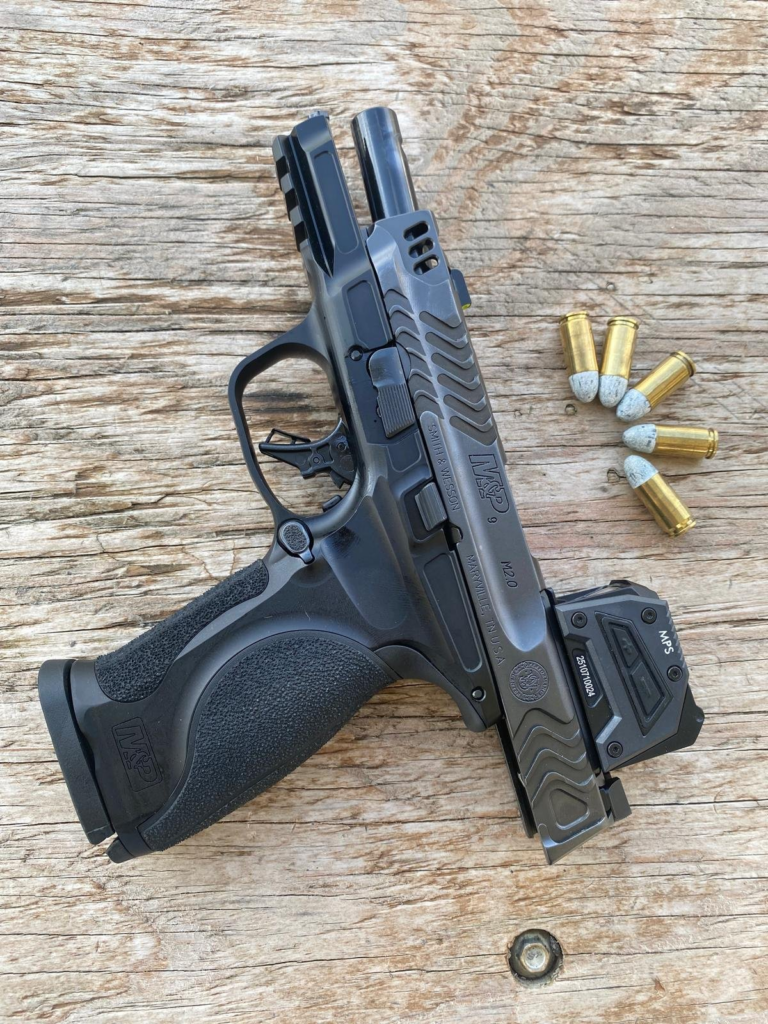
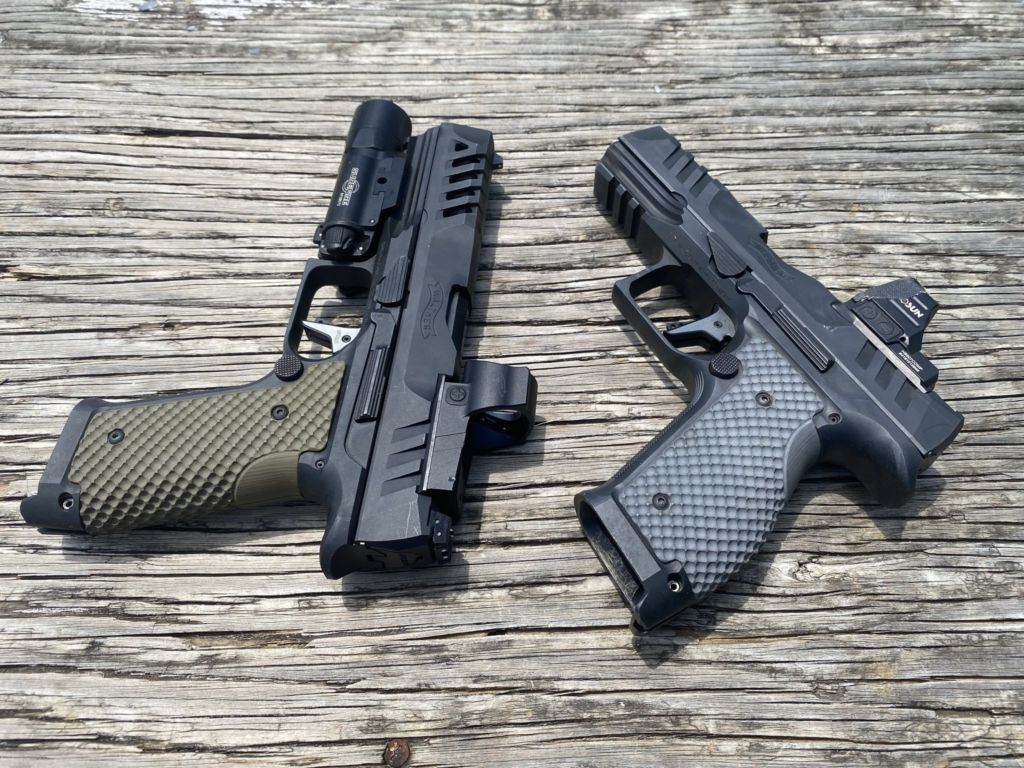
The Walther PDP Steel Frame
I shot Walther PDP Steel Frame on Day 2 for two reasons.
A) with the second day of class focusing on movement that is relevant to me as a USPSA competitor, I opted to shoot the gun I actually shoot in matches: steel-framed Walther.
B) I’m concurrently testing and evaluating the ZR Tactical long-stroke RSA (recoil spring assembly) engineered specifically for this specific 5-inch steel-frame PDP. So, Day 2 was the perfect excuse to cycle more rounds with this RSA in place.
Between both days, I ended up shooting 90% of that case of Blazer Aluminum 9mm, which I think is an excellent training round. Neither the Walther PDP SF nor the S&W M&P 2.0 Metal Carry Comp had any problems cycling it.
The Takeaway

I’ve previously written about Little’s book, The Way Is In Training, which I read last year. So, actually attending one of his classes in person felt like the logical next step—a positive escalation from reading his book, if you will.
Admittedly, when I first got my registration/confirmation email for class, I was actually somewhat skeptical when there was a reminder to bring 1,000 rounds of ammo for the weekend. Due to the cost of everything, the norm these days seems to be under 800 rounds for most two-day courses.
By the end of the weekend, we students had put in so much work on both days, drilling and shooting, that every last cartridge I fired felt worthwhile. After all, this is what practice ammo is for: to do the work.
Little makes no qualms about the fact that he’s a perpetual student himself. It’s evident that he works very hard to reach his level of expertise in shooting. Throughout the training weekend, he kept referring to times he took someone else’s class as a student or topics learned from other instructors in spite of his already-established accolades or accomplishments.
Final Thoughts
Even with all the shooting and movement we did, Pistol Skill Development’s ulterior theme was to inspire students to practice on their own. I can’t stress enough that the true value of this class stems from Little’s unique experiences across the world of high-level competition, SWAT teams, and the US Army Special Forces.
It’s not just Little’s professional past but also his insights as an active participant in performance shooting that sets him apart. I mean, not only do I regularly run into this dude at local club matches and see him put in work like the rest of us, but you can find evidence online of his use of virtual reality training, major-level match attendance, and so on.
Ultimately, this class is suitable for the motivated student that’s looking to improve their comprehensive handgun shooting skills and are ready to put in some work.

